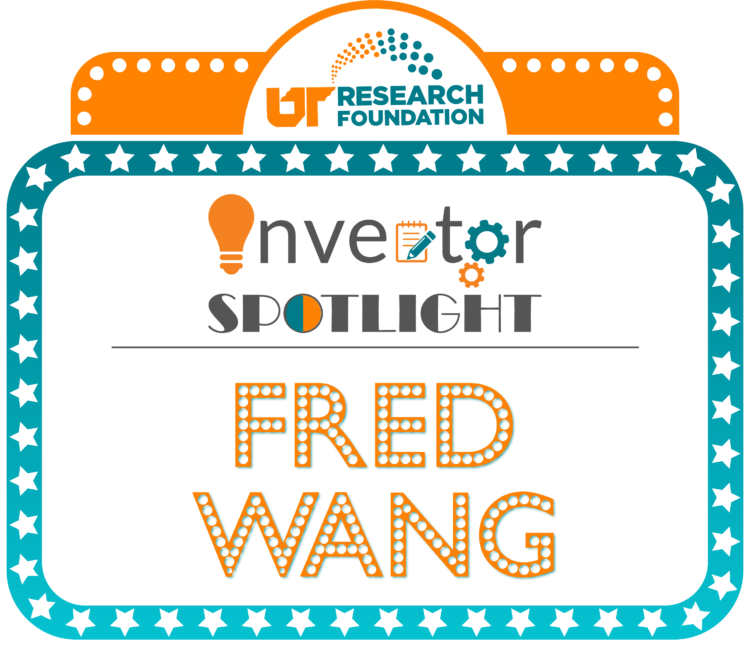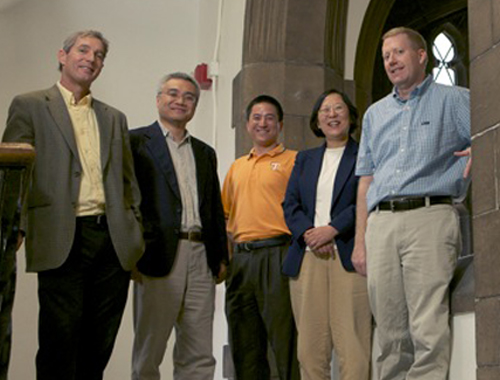
Dr. Fei “Fred” Wang is a Professor in Electrical Engineering at the University of Tennessee (UT), the Condra Chair of Excellence, and Technical Director for the Center for Ultra-wide-area Resilient Electric Energy Transmission Networks (CURENT). His primary research interest is in power electronics, with a focus on electrified transportation and power grid applications. Dr. Wang received his master’s and Ph.D. degrees in electrical engineering from the University of Southern California. He spent almost 10 years in the private sector with General Electric before joining Virginia Tech’s Center for Power Electronics Systems, where he worked from 2001 – 2009. Dr. Wang, who holds a joint appointment with Oak Ridge National Laboratory (ORNL), started at the UT Tickle College of Engineering in 2009.
One of Dr. Wang’s active areas of research involves wide bandgap semiconductor technology. These types of semiconductors, unlike their silicone-based counterparts, allow power electronic devices to be smaller, faster, and more efficient. Dr. Wang has been working with CURENT industry member Keysight Technologies to develop a current sensor for wide bandgap semiconductor characterizations. The sensor is smaller and faster than similar devices currently on the market, making it a better fit for wide bandgap semiconductors. UTRF executed a commercial license agreement with Keysight Technologies for this technology in November 2017, and a patent application was filed in December 2017. In addition to the sensor technology, Dr. Wang is working on a project with the PowerAmerica Institute at North Carolina State University, a Department of Energy (DOE) manufacturing institute, to develop a wide bandgap semiconductor–based power converter for the Smart Grid, a developing electricity supply network that will make the grid more efficient, reliable, and secure.



Dr. Wang’s interest in power grid applications spurred his work on a DOE-funded project aimed at developing a smart, flexible microgrid. Microgrids are systems that can operate in conjunction with the larger power grid or independently, which reduces or eliminates the need to produce power far away from where it is needed and can better utilize distributed energy sources like solar power. Their use can be beneficial in the aftermath of an extreme weather event, like a hurricane or a tornado, allowing local utilities to restore power far sooner to their customers. Dr. Wang is working with several partners in East Tennessee such as the Tennessee Valley Authority, the Electric Power Research Institute, and the Chattanooga Electric Power Board to identify ways to avoid the high costs associated with microgrids. This includes using existing intelligent switches and fast communication links in smart grids, improving the economic benefits and reliability of the system, and using open source software and general purpose hardware to reduce controller and deployment cost.
In addition to these projects, Dr. Wang conceived CURENT’s hardware testbed, a real-time power electronics–based emulator that is used to study power grid behavior. He is also leading the research to develop a cryogenically cooled power converter for future electric airplanes. He holds 11 patents, with 4 pending patents, and has authored or coauthored over 400 peer-reviewed publications.
Recently, Dr. Wang’s research endeavors led to his selection as a 2017 National Academy of Inventors (NAI) Fellow. He is the fourth NAI Fellow from UT’s Tickle College of Engineering, joining CURENT colleague Yilu Liu, UT-ORNL Governor’s Chair for Power Electronics and CURENT Deputy Director; Mark Dean, John Fisher Distinguished Professor; and Doug Birdwell, professor emeritus.
Dr. Wang is appreciative of the support he has received from UTRF in navigating the patenting and licensing process and advising on how best to protect, promote, and market his technologies. He values the personal relationships he has with UTRF staff and views them as a partner in his research and development efforts. Dr. Wang also credits the relationships he has nurtured with CURENT and ORNL colleagues for making his work possible